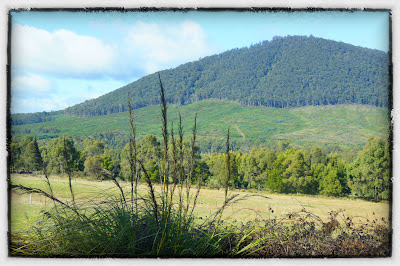
Last week during my travels to Australia I was fortunate enough to meet up with a fellow Hanji artist, Kyung Young Moon in Scotsdale, Tasmania. I'd seen her work and was anxious to meet this lady in person.
She is a Korean who has been based in Tasmania for the past 6 years. Her worked is exhibited in galleries around Australia including the cities of Melbourne, Sydney and Hobart. Her background is in Fine Arts and Industrial design and therefore she's been able to bring those skills to this craft by designing new pieces and painting on the articles she has made.
For the last 3 years Trinity, as she calls herself, has been one of the celebrity artists at the Deloraine Craft Fair in Tasmania.
Here is an excerpt from an article in the Tasmania Mercury by Nick Clark in November, 2011.
'A KOREAN interpretation of the Tasmanian landscape and lifestyle is behind much of the hanji paper work of paper artist Trinity Cleary.
Her persimmon tree and other works are on display at the Tasmanian Craft Fair at Deloraine.
Ms Cleary's work is one of the highlights of the four-day fair, which started with a bumper crowd yesterday.
"I want to be Tasmanian but actually I'm a Korean and cannot change all my brain and my Korean background and thinking," she said.
"I'm Korean but it's made in Tasmania. The lamps are made of wire, plastic and the hanji paper, which was used for centuries to insulate Korean houses.
"In Korea it is quite difficult to have a garden - people just have a little pot."
Ms Cleary, now of Scottsdale, became a paper artist after studying industrial design.'
This lovely lady met me at the Scotsdale Art studio where her work is being exhibited locally and we chatted about what it's like doing Hanji in Australia and the triumphs and trials of exhibiting and selling in Art galleries around the country.
Trinity's experiences have seen her overcome many hurdles thrown at her through government legislations in Australia but through a sheer determination to succeed she has worked through them and is now able to show her work confidently and creatively.
What I took away from this meeting was that I'd made a new friend and that if you have a passion for something then go for it, don't let small obstacles stand in your way.
If you wish to see more of her work for sale then you can go to this site:



Comments
Post a Comment